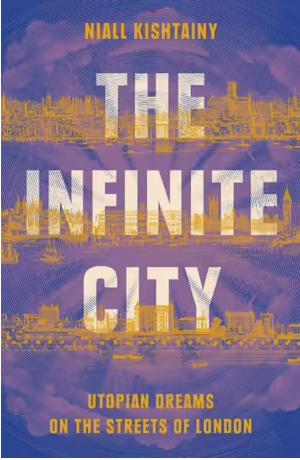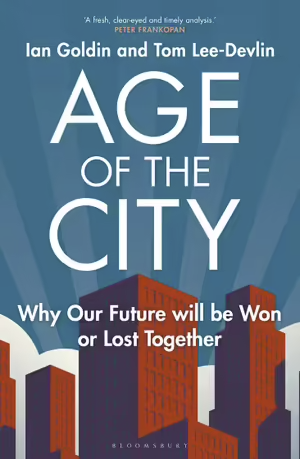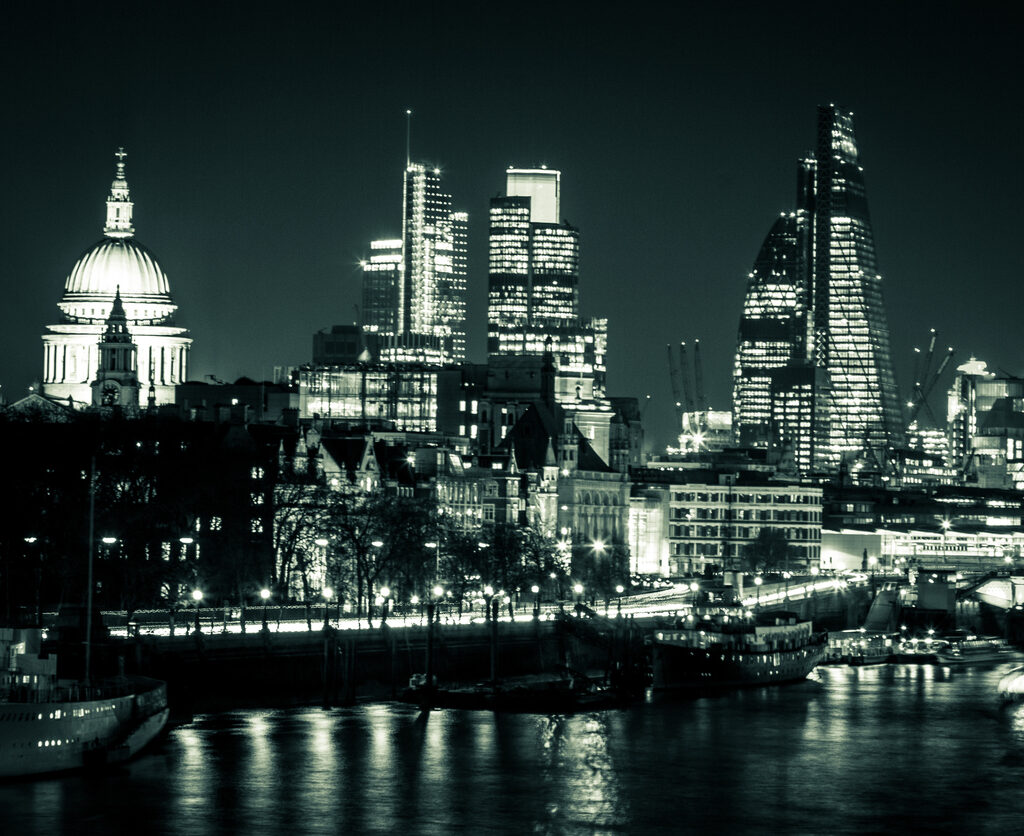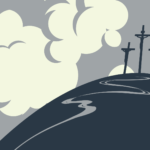Review: The Infinite City, Niall Kishtainy, William Collins | Age of the City, Ian Goldin and Tom Lee-Devlin, Bloomsbury
London rivals Rome and Jerusalem in the collective imagination, as an idea, as a symbol of potential, beyond actuality. At one stage the largest city in the world, it has persistently been a place of both wealth and poverty, on a vast scale. While it has been labelled derisively as Babylon, Niall Kishtainy shows that there have always been those who thought it could be reordered, as a heavenly Jerusalem replicated on Earth, as utopia.
The term utopia comes, of course, from London’s Thomas More, who thought that both rich and poor were ‘enslaved’ by London, and who envisaged an ideal city-state where citizens were unshowy, rose early, loved learning and spurned money and private property. His utopia was communal – some would say communist – with echoes of the early church. But his use of the word utopia, which has a vague meaning, either ‘good place’ or ‘no place’, questions whether More thought anything close to his vision was possible.

Others thought it was. Gerard Winstanley and the Diggers, who appeared amongst the chaos of the English Civil War, the ‘world turned upside-down’, compared Londoners to the Hebrews in Egypt and argued for common land. They became objects of hatred simply because they shared produce and lived simply. Winstanley saw the city through the lens of a radical Christianity, seeing redemption as a concept that could be applied to the city-state. (Compatriots such as the Ranters seemed to see utopia more as a bacchanalia.)
Such radicalism, often bolstered by a more radical reading of the Bible, persisted through revolutions and restorations. In the late 1700s, Thomas Spence came to the city with ideas about reordering society, casting subversive medallions into the streets and arguing against the hoarding of land and for the abolition of landlordism (an issue relevant for contemporary cities). He also devised his own phonetic alphabet in an effort to realise utopia amongst the uneducated.
In the post-Enlightenment age, utopia was liable to come about with the application of reason, it was thought, and with the perfecting of supposedly innate human goodness rather than revolution (though Kishtainy emphasises that More’s utopia was not about perfection but about alternatives). In the newly industrial England, some thought about what an alternative factory city would look like. Robert Owen was an industrialist who made a fortune then denounced capitalism, proposing factory cities of 1000 or so, founded on utopian principles, especially common property. His views would mutate into what became known as socialism.
Although after the Great Fire, Christopher Wren’s new city plan was not realised, by the late nineteenth century visionaries were making garden suburbs as an antidote to Dickensian London. Okay, so garden suburbs aren’t exactly utopia, but there is a strain of utopian thinking here, and in the context of postwar austerity and Keynesian economics, one planning minister said he would make More’s utopia a reality. There was all manner of grand visions of a modern London, but there was also a backlash, against top-down planning, with agitation for more local control, particularly as communism was now equated with totalitarianism.
Utopian thinking was inverting, or reverting, with grassroots protests against development in the later twentieth century. On at least one occasion, one London street was reimagined as a communal living space, devoid of cars, a vision of an alternative community – that is, until the police smashed it all to make way for, of course, a freeway.
In the past two decades there have been the Reclaim the Streets and Occupy movements, who envisaged communities freed from the tyranny of cars and international finance, though there also seems to be a thread of utopian thinking in those on the political right who see the market as an omniscient god. For them, the philosophy is: there is no alternative to free-market capitalism. But for protestors arguing for a radical vision of utopia, amidst threats of climate catastrophe, there is, contrarily, no alternative to curtailing capitalism.
Utopian thinking may be required as we negotiate the future in the ‘age of the city’. The majority of the world’s population now lives in cities, a marked acceleration since the second World War. Ian Goldin and Tom Lee-Devlin offer a succinct history of how cities got here before we did (for those of us who live in cities) and some suggestions as to what we need to do to make cities more equitable and sustainable.

Unsurprisingly, for a couple of economists, their prose is more matter-of-fact than Kishtainy’s. They sum up the history well, and are good at wielding statistics to combat presumptions, but some of their prescriptions are fairly generalised, such as the following: ‘Cities need to find ways to harness technology for connecting people whose lives might otherwise not overlap.’
Although they are clear that cities have large obstacles to overcome, particularly climate-related, that we have been slow to address, they are from the humanist school that suggests humanity has a few problems that we can nevertheless fix with a bit of ingenuity. Their solutions are significant tweaks rather than a ‘world turned upside-down’.
They argue, rather sensibly, for international cooperation on climate, more international development, skilled migration, a shift to more medium-density housing, more mixed neighbourhoods, more affordable inner-city housing, more equitable education and more public transport and bicycles. They argue for decentralisation but allow that an ageing population, dual incomes and housing prices restrict mobility. They agree that the free market can’t fix things, and argue for more government intervention, but one may have reason to be sceptical about how much significant change governments can accomplish.
There are better conditions (hygiene and medicine predominantly) in cities now than in the nineteenth century. Across Asia, Africa and South America cities have exploded, raising incomes, but many cities have areas that have entrenched inequality. Here, nice, friendly office spaces or secure working from home are far removed from daily life.
And many of these cities are threatened by climate change. Ninety percent of global cities are coastal and liable to face inundation in future decades. Add to that the increased instability of water supplies. And conditions there will be exacerbated by rises in population, as climate-related floods and dry force more rural people into these overcrowded cities.
Goldin and Lee-Devlin use the term ‘level up’ (which is worryingly close to the ‘rising-tide-lifts-all-boats’ argument from American neocons) in arguing for less inequality within and between cities. Kishtainy is sceptical of this term as a euphemism for keeping the rich rich. There is a danger that as threats increase, so will inequality. What we need is revolutionary, visionary action, but, then again, many of the utopias Kishtainy describes came to nothing, and there is always the danger that a utopia will turn into a dystopia.
Nick Mattiske blogs on books at coburgreviewofbooks.wordpress.com and is the illustrator of Thoughts That Feel So Big.












